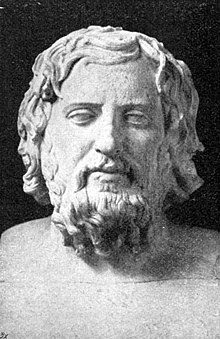Waldorf education, also known as Steiner education, is based on the educational philosophy of Rudolf Steiner, the founder of Anthroposophy. Its pedagogy
emphasizes the role of imagination in learning, striving to integrate
the intellectual, practical, and artistic development of pupils in a
holistic manner.
Steiner's division of child development into three major stages is reflected in the schools' approach:
Qualitative assessments of student work are integrated into the daily life of the classroom, with quantitative testing playing a minimal role in primary education. Standardized testing is usually limited to what is required for college entry. Individual teachers and schools have a great deal of autonomy in determining curriculum content, teaching methodology, and governance.
The first Waldorf school opened in 1919 in Stuttgart, Germany. At present there are about 1,150 independent Waldorf schools,[1] about 1,800 kindergartens[2] and 646 centers for special education,[3] located in 75 countries, constituting one of the largest independent school movements internationally. There are also a number of Waldorf-based public schools,[5] charter schools and academies, and homeschooling[6] environments. In Continental Europe, Waldorf pedagogy has become a well-recognized theory of education that has influenced public schooling and many European Waldorf schools receive state funding. Public funding of Waldorf schools in English-speaking countries is increasingly widespread but has encountered controversy.
Steiner's division of child development into three major stages is reflected in the schools' approach:
- Early childhood education focuses on practical, hands-on activities and creative play,
- Elementary education focuses on developing artistic expression and social capacities, and
- Secondary education focuses on developing critical reasoning and empathic understanding.
Qualitative assessments of student work are integrated into the daily life of the classroom, with quantitative testing playing a minimal role in primary education. Standardized testing is usually limited to what is required for college entry. Individual teachers and schools have a great deal of autonomy in determining curriculum content, teaching methodology, and governance.
The first Waldorf school opened in 1919 in Stuttgart, Germany. At present there are about 1,150 independent Waldorf schools,[1] about 1,800 kindergartens[2] and 646 centers for special education,[3] located in 75 countries, constituting one of the largest independent school movements internationally. There are also a number of Waldorf-based public schools,[5] charter schools and academies, and homeschooling[6] environments. In Continental Europe, Waldorf pedagogy has become a well-recognized theory of education that has influenced public schooling and many European Waldorf schools receive state funding. Public funding of Waldorf schools in English-speaking countries is increasingly widespread but has encountered controversy.
| Continent | Schools | Countries | |||
|---|---|---|---|---|---|
| Europe | 779 | 35 | |||
| North America | 202[7] | 2 | |||
| South America | 61 | 6 | |||
| Central America | 16 | 4 | |||
| Asia | 65 | 13 | |||
| Oceania | 62 | 2 | |||
| Africa | 22 | 5 | |||
| Total | 1227 | 67 |
Rudolf Steiner
Origins and history
The first school based upon Steiner's ideas was opened in 1919 in response to a request by Emil Molt, the owner and managing director of the Waldorf-Astoria Cigarette Company in Stuttgart, Germany, to serve the children of employees of the factory. This is the source of the name Waldorf, which is now trademarked in some countries in association with the method. The Stuttgart school grew rapidly and soon the majority of pupils were from families not connected directly with the company. The co-educational school was the first comprehensive school in Germany, serving children from all social classes, genders, abilities, and interests.
Growth in the number of accredited Waldorf schools from 1919 to 2016
Political interference from the Nazi regime limited and ultimately closed most Waldorf schools in Europe, with the exception of the British, Swiss, and some Dutch schools. The affected schools were reopened after the Second World War,[17][18] though those in Soviet-dominated areas were closed again a few years later by Communist regimes.
In North America, the number of Waldorf schools increased from nine in the US[20] and one in Canada[21] in 1967 to around 200 in the US[1][22][23] and over 20 in Canada[24] today. There are currently 29 Steiner schools in the United Kingdom and 3 in the Republic of Ireland.
After the dissolution of the Soviet Union, Waldorf schools began to proliferate in Central and Eastern Europe. Most recently, many schools have opened in Asia, especially in China.[26][27] There are currently over 1,000 independent Waldorf schools worldwide.[1]
Developmental approach
The structure of Waldorf education follows Steiner's theory of child development, which divides childhood into three developmental stages[8] and describes learning strategies appropriate to each stage.[28][29] These stages, each of which lasts approximately seven years, are broadly similar to those later observed and described by Piaget.[8]:402[30] Steiner's educational ideas closely follow modern "common sense" educational theory, as this has developed since Comenius and Pestalozzi.The stated purpose of this approach is to awaken the "physical, behavioral, emotional, cognitive, social, and spiritual" aspects of each individual,[32] fostering creative as well as analytic thinking.[32]:28 A 2005 review found that Waldorf schools successfully develop "creative, social and other capabilities important in the holistic growth of the person".
Where is the book in which the teacher can read about what teaching is? The children themselves are this book. We should not learn to teach out of any book other than the one lying open before us and consisting of the children themselves.
— Rudolf Steiner, Human Values in Education
Pre-school and kindergarten: to age 6/7
Waldorf pedagogical theory considers that during the first years of life children learn best by being immersed in an environment they can learn from through un-selfconscious imitation of practical activities. The early childhood curriculum therefore centers on experiential education, allowing children to learn by example, and opportunities for imaginative play.[34][35][36][37] The overall goal of the curriculum is to "imbue the child with a sense that the world is good".
Waldorf preschools employ a regular daily routine that includes free play, artistic work (e.g. drawing, painting or modeling), circle time (songs, games, and stories), and practical tasks (e.g. cooking, cleaning, and gardening), with rhythmic variations.[39] Periods of outdoor recess are also usually included.[38]:125 The classroom is intended to resemble a home, with tools and toys usually sourced from simple, natural materials that lend themselves to imaginative play.[40] The use of natural materials has been widely praised as fulfilling children's aesthetic needs, encouraging their imagination, and reinforcing their identification with nature, though one pair of reviewers questioned whether the preference for natural, non-manufactured materials is "a reaction against the dehumanizing aspects of nineteenth-century industrialization" rather than a "reasoned assessment of twenty-first century children's needs".
Pre-school and kindergarten programs generally include seasonal festivals drawn from a variety of traditions, with attention placed on the traditions brought forth from the community. Waldorf schools in the Western Hemisphere have traditionally celebrated Christian festivals, though many North American schools also include Jewish festivals.
Waldorf kindergarten and lower grades generally discourage pupils' use of electronic media such as television and computers. There are a variety of reasons for this: Waldorf educators believe that use of these conflicts with young children's developmental needs, media users may be physically inactive, and media may be seen to contain inappropriate or undesirable content and to hamper the imagination.
Elementary education: age 6/7 to 14
Waldorf elementary school classroom
Waldorf pedagogues consider that readiness for formal learning depends upon increased independence of character, temperament, habits, and memory, one of the markers of which is the loss of the baby teeth. Formal instruction in reading, writing, and other academic disciplines are therefore not introduced until students enter the elementary school, when pupils are around seven years of age. Steiner believed that engaging young children in abstract intellectual activity too early would adversely affect their growth and development.
Waldorf elementary schools (ages 7–14) emphasize cultivating children's emotional life and imagination. In order that students can connect more deeply with the subject matter, academic instruction is presented through artistic work that includes story-telling, visual arts, drama, movement, vocal and instrumental music, and crafts. The core curriculum includes language arts, mythology, history, geography, geology, algebra, geometry, mineralogy, biology, astronomy, physics, chemistry, and nutrition. The school day generally begins with a one-and-a-half to two-hour, cognitively oriented academic lesson, or "Main Lesson", that focuses on a single theme over the course of about a month's time. This typically begins with introductory activities that may include singing, instrumental music, and recitations of poetry, generally including a verse written by Steiner for the start of a school day.
Elementary school educators' stated task is to present a role model children will naturally want to follow, gaining authority through fostering rapport and "nurturing curiosity, imagination, and creativity". The declared goal of this second stage is to "imbue children with a sense that the world is beautiful". There is little reliance on standardized textbooks.
Waldorf elementary education allows for individual variations in the pace of learning, based upon the expectation that a child will grasp a concept or achieve a skill when he or she is ready. Cooperation takes priority over competition. This approach also extends to physical education; competitive team sports are introduced in upper grades.
Introduction of the alphabet in first grade
Each class normally remains together as a cohort throughout their years, developing as a quasi-familial social group whose members know each other quite deeply. In the elementary years, a core teacher teaches the primary academic subjects. A central role of this class teacher is to provide supportive role models both through personal example and through stories drawn from a variety of cultures, educating by exercising creative, loving authority. Class teachers are normally expected to teach a group of children for several years, a practice known as looping. The traditional goal was for the teacher to remain with a class for the eight years of the "lower school" cycle, but in recent years the duration of these cycles has been increasingly treated flexibly. Already in first grade, specialized teachers teach many of the subjects, including music, crafts, movement, and two foreign languages from complementary language families (in English-speaking countries often German and either Spanish or French); these subjects remain central to the curriculum throughout the elementary school years.
While class teachers serve a valuable role as personal mentors, establishing "lasting relationships with pupils", especially in the early years, Ullrich documented problems when the same class teacher continues into the middle school years. Noting that there is a danger of any authority figure limiting students enthusiasm for inquiry and assertion of autonomy, he emphasized the need for teachers to encourage independent thought and explanatory discussion in these years, and cited approvingly a number of schools where the class teacher accompanies the class for six years, after which specialist teachers play a significantly greater role.
Four temperaments
Steiner considered children's cognitive, emotional and behavioral development to be interlinked. When students in a Waldorf school are grouped, it is generally not by a singular focus on their academic abilities. Instead Steiner adapted the idea of the classic four temperaments – melancholic, sanguine, phlegmatic and choleric – for pedagogical use in the elementary years. Steiner indicated that teaching should be differentiated to accommodate the different needs that these psychophysical types represent. For example, "cholerics are risk takers, phlegmatics take things calmly, melancholics are sensitive or introverted, and sanguines take things lightly". Today Waldorf teachers may work with the notion of temperaments to differentiate their instruction. Seating arrangements and class activities may be planned taking into account the temperaments of the students but this is often not readily apparent to observers. Steiner also believed that teachers must consider their own temperament and be prepared to work with it positively in the classroom, that temperament is emergent in children, and that most people express a combination of temperaments rather than a pure single type.Secondary education: ages 14 and up
In most Waldorf schools, pupils enter secondary education when they are about fourteen years old. Secondary education is provided by specialist teachers for each subject. The education focuses much more strongly on academic subjects, though students normally continue to take courses in art, music, and crafts. The curriculum is structured to foster pupils' intellectual understanding, independent judgment, and ethical ideals such as social responsibility, aiming to meet the developing capacity for abstract thought and conceptual judgment.Student work from a projective geometry block in a Waldorf high school
In the third developmental stage (14 years old and up), children in Waldorf programs are supposed to learn through their own thinking and judgment. Students are asked to understand abstract material and expected to have sufficient foundation and maturity to form conclusions using their own judgment. The intention of the third stage is to "imbue children with a sense that the world is true".
The overarching goals are to provide young people the basis on which to develop into free, morally responsible, and integrated individuals, with the aim of helping young people "go out into the world as free, independent and creative beings". No independent studies have been published as to whether or not Waldorf education achieves this aim.
Educational theory and practice
The philosophical foundation of the Waldorf approach, anthroposophy, underpins its primary pedagogical goals: to provide an education that enables children to become free human beings, and to help children to incarnate their "unfolding spiritual identity", carried from the preceding spiritual existence, as beings of body, soul, and spirit in this lifetime. Educational researcher Martin Ashley suggests that the latter role would be problematic for secular teachers and parents in state schools, and the commitment to a spiritual background both of the child and the education has been problematic for some committed to a secular perspective.While anthroposophy underpins the curriculum design, pedagogical approach, and organizational structure, it is explicitly not taught within the school curriculum and studies have shown that Waldorf pupils have little awareness of it.[32]:6 Tensions may arise within the Waldorf community between the commitment to Steiner's original intentions, which has sometimes acted as a valuable anchor against following educational fads, and openness to new directions in education, such as the incorporation of new technologies or modern methods of accountability and assessment.
Waldorf school in Ismaning, Bavaria
Waldorf schools frequently have striking architecture, employing walls meeting at varied angles (not only perpendicularly) to achieve a more fluid, less boxed-in feeling to the space. The walls are often painted in subtle colors, often with a lazure technique, and include textured surfaces.
Assessment
The schools primarily assess students through reports on individual academic progress and personal development. The emphasis is on characterization through qualitative description. Pupils' progress is primarily evaluated through portfolio work in academic blocks and discussion of pupils in teacher conferences. Standardized tests are rare, with the exception of examinations necessary for college entry taken during the secondary school years. Letter grades are generally not given until students enter high school at 14–15 years, as the educational emphasis is on children's holistic development, not solely their academic progress. Pupils are not normally asked to repeat years of elementary or secondary education.Curriculum
Though Waldorf schools are autonomous institutions not required to follow a prescribed curriculum (beyond those required by local governments) there are widely agreed upon guidelines for the Waldorf curriculum, supported by the schools' common principles. The schools offer a wide curriculum "governed by close observation and recording of what content motivates children at different ages" and including within it, for example, the English, Welsh and Northern Irish National Curriculum.The main academic subjects are introduced through up to two-hour morning lesson blocks that last for several weeks. These lesson blocks are horizontally integrated at each grade level in that the topic of the block will be infused into many of the activities of the classroom and vertically integrated in that each subject will be revisited over the course of the education with increasing complexity as students develop their skills, reasoning capacities and individual sense of self. This has been described as a spiral curriculum.
Many subjects and skills not considered core parts of mainstream schools, such as art, music, gardening, and mythology, are central to Waldorf education. Students learn a variety of fine and practical arts. Elementary students paint, draw, sculpt, knit, weave, and crochet. Older students build on these experiences and learn new skills such as pattern-making and sewing, wood and stone carving, metal work, book-binding, and doll or puppet making. Fine art instruction includes form drawing, sketching, sculpting, perspective drawing and other techniques.
Music instruction begins with singing in early childhood and choral instruction remains an important component through the end of high school. Pupils usually learn to play pentatonic flutes, recorders and/or lyres in the early elementary grades. Around age 9, diatonic recorders and orchestral instruments are introduced.
Certain subjects are largely unique to the Waldorf schools. Foremost among these is eurythmy, a movement art usually accompanying spoken texts or music which includes elements of drama and dance and is designed to provide individuals and classes with a "sense of integration and harmony". Although found in other educational contexts, cooking, farming, and environmental and outdoor education have long been incorporated into the Waldorf curriculum. Other differences include: non-competitive games and free play in the younger years as opposed to athletics instruction; instruction in two foreign languages from the beginning of elementary school; and an experiential-phenomenological approach to science whereby students observe and depict scientific concepts in their own words and drawings rather than encountering the ideas first through a textbook.
The Waldorf curriculum has always incorporated multiple intelligences.
Science
Geometric growth of the nautilus shell – student work
Waldorf schools cultivate a phenomenological approach to science education, that is, using an exemplary methodology of inquiry-based learning aiming to "strengthen the interest and ability to observe". Their aim is to cultivate a sense of the "meaningful wholeness of nature; a wholeness from which the human being is not separated or alienated" while attaining precise scientific concepts. Empirical measurements, including several PISA studies, have shown Waldorf students to be better motivated to study science and achieving scientific understanding significantly better than that attained by comparable state school students.
One study of the science curriculum compared a group of American Waldorf school students to American public school students on three different test variables. Two tests measured verbal and non-verbal logical reasoning and the third was an international TIMSS test. The TIMSS test covered scientific understanding of magnetism. The researchers found that Waldorf school students scored higher than both the public school students and the national average on the TIMSS test while scoring the same as the public school students on the logical reasoning tests. However, when the logical reasoning tests measured students' understanding of part-to-whole relations, the Waldorf students also outperformed the public school students. The authors of the study noted the Waldorf students' enthusiasm for science, but viewed the science curriculum as "somewhat old-fashioned and out of date, as well as including some doubtful scientific material". Educational researchers Phillip and Glenys Woods, who reviewed this study, criticized the authors' implication of an "unresolved conflict": that it is possible for supposedly inaccurate science to lead to demonstrably better scientific understanding.
In 2008, Stockholm University terminated its Waldorf teacher training courses. In a statement the university said "the courses did not encompass sufficient subject theory and a large part of the subject theory that is included is not founded on any scientific base". The dean, Stefan Nordlund, stated "the syllabus contains literature which conveys scientific inaccuracies that are worse than woolly; they are downright dangerous".
Information technology
The media center at the Shearwater Steiner School in Australia
Because they view human interaction as the essential basis for younger children's learning and growth, Waldorf schools view computer technology as being first useful to children in the early teen years, after they have mastered "fundamental, time-honoured ways of discovering information and learning, such as practical experiments and books".
In the United Kingdom, Waldorf schools are granted an exemption by the Department for Education (DfE) from the requirement to teach ICT as part of Foundation Stage education (ages 3–5). Education researchers John Siraj-Blatchford and David Whitebread praised the [DfE] for making this exemption, highlighting Waldorf education's emphasis on simplicity of resources and the way the education cultivates the imagination.
Waldorf schools have been very popular with parents working in the technology sector, including those from some of the most advanced technology firms. In one Silicon Valley school, "three-quarters of the students have parents with a strong high-tech connection". A number of technologically oriented parents from the school expressed their conviction that younger students do not need the exposure to computers and technology, but benefit from creative aspects of the education; one Google executive was quoted as saying "I fundamentally reject the notion you need technology aids in grammar school."
Spirituality
Waldorf education aims to educate children about a wide range of religious traditions without favoring any one of these. One of Steiner's primary aims was to establish a spiritual yet nondenominational setting for children from all backgrounds that recognized the value of role models drawn from a wide range of literary and historical traditions in developing children's fantasy and moral imaginations. Indeed, for Steiner, education was an activity which fosters the human being's connection to the divine and is thus inherently religious.Waldorf schools were historically "Christian based and theistically oriented", as they expand into different cultural settings they are adapting to "a truly pluralistic spirituality". Waldorf theories and practices are often modified from their European and Christian roots to meet the historical and cultural traditions of the local community. Examples of such adaptation include the Waldorf schools in Palestine and Japan, which celebrate festivals drawn from these cultures, and classes in the Milwaukee Urban Waldorf school, which have adopted African American and Native American traditions. Such festivals, as well as assemblies generally, which play an important role in Waldorf schools, generally center on classes presenting their work.
Religion classes, universally absent from American Waldorf schools, are a mandatory offering in some German federal states, whereby in Waldorf schools each religious denomination provides its own teachers for the classes, and a non-denominational religion class is also offered. In the United Kingdom, public Waldorf schools are not categorized as "Faith schools".
Tom Stehlik places Waldorf education in a humanistic tradition, and contrasts its philosophically grounded approach to "value-neutral" secular state schooling systems.
Teacher education
Waldorf teacher training centre in Witten, Germany
Teacher education programs provide training in the principles of child development, including pedagogical texts and other works by Steiner, and in the methods of Waldorf pedagogy. Particularly for early childhood and elementary school teachers, the training includes considerable artistic work in storytelling, movement, painting, music, and handwork, as well as academic and practical studies to enable future teachers to work across all areas of the unusually broad curriculum.
Governance
Independent schools
One of Waldorf education's central premises is that all educational and cultural institutions should be self-governing and should grant teachers a high degree of creative autonomy within the school; this is based upon the conviction that a holistic approach to education aiming at the development of free individuals can only be successful when based on a school form that expresses these same principles. Most Waldorf schools are not directed by a principal or head teacher, but rather by a number of groups, including:- The college of teachers, who decide on pedagogical issues, normally on the basis of consensus. This group is usually open to full-time teachers who have been with the school for a prescribed period of time. Each school is accordingly unique in its approach, as it may act solely on the basis of the decisions of the college of teachers to set policy or other actions pertaining to the school and its students.
- The board of trustees, who decide on governance issues, especially those relating to school finances and legal issues, including formulating strategic plans and central policies.
There are coordinating bodies for Waldorf education at both the national (e.g. the Association of Waldorf Schools of North America and the Steiner Waldorf Schools Fellowship in the UK and Ireland) and international level (e.g. International Association for Waldorf Education and The European Council for Steiner Waldorf Education (ECSWE)). These organizations certify the use of the registered names "Waldorf" and "Steiner school" and offer accreditations, often in conjunction with regional independent school associations.
State-funded schools
United States
The first US Waldorf-inspired public school, the Yuba River Charter School in California, opened in 1994. The Waldorf public school movement is currently expanding rapidly; while in 2010, there were twelve Waldorf-inspired public schools in the United States, by 2015 there were forty-two such schools.Most Waldorf-inspired schools in the United States are elementary schools established as either magnet or charter schools. The first Waldorf-inspired high school was launched in 2008 with assistance from the Bill and Melinda Gates Foundation. While these schools follow a similar developmental approach as the independent schools, Waldorf-inspired schools must demonstrate achievement on standardized tests in order to continue receiving public funding. Studies of standardized test scores suggest that students at Waldorf-inspired schools tend to score below their peers in the earliest grades and catch up or surpass their peers by middle school. One study found that students at Waldorf-inspired schools watch less television and spend more time engaging in creative activities or spending time with friends. Public Waldorf schools' need to demonstrate achievement through standardized test scores has encouraged increased use of textbooks and expanded instructional time for academic subjects.
A legal challenge alleging that California school districts' Waldorf-inspired schools violated the First and Fourteenth Amendments of the United States Constitution and Article IX of the California Constitution was dismissed on its merits in 2005, 2007, and 2012.
United Kingdom
The first state-funded Steiner-Waldorf school in the United Kingdom, the Steiner Academy Hereford, opened in 2008. Since then, Steiner academies have opened in Frome, Exeter and Bristol as part of the government-funded free schools programme.In November 2012, BBC News broadcast an item about accusations that the establishment of a state-funded Waldorf School in Frome was a misguided use of public money. The broadcast reported that concerns were being raised about Rudolf Steiner's beliefs, stating he "believed in reincarnation and said it was related to race, with black (schwarz) people being the least spiritually developed, and white (weiß) people the most." In 2007, the European Council for Steiner Waldorf Education (ECSWE) issued a statement, "Waldorf schools against discrimination", which said in part, "Waldorf schools do not select, stratify or discriminate amongst their pupils, but consider all human beings to be free and equal in dignity and rights, independent of ethnicity, national or social origin, gender, language, religion, and political or other convictions. Anthroposophy, upon which Waldorf education is founded, stands firmly against all forms of racism and nationalism."
The British Humanist Association critiqued a reference book used to train teachers in Steiner academies for suggesting that the heart is sensitive to emotions and promoting homeopathy, while critiquing Darwinism for purportedly reductionist thinking and Victorian ethics. Edzard Ernst, emeritus professor of complementary medicine, suggested that Waldorf schools "have an anti-science agenda". A United Kingdom Department for Education spokeswoman responded that "no state school is allowed to teach homeopathy as scientific fact" and that free schools "must demonstrate that they will provide a broad and balanced curriculum".
Australia, New Zealand, and Canada
Australia has "Steiner streams" incorporated into a small number of existing government schools in some states; in addition, independent Steiner-Waldorf schools receive partial government funding. The majority of Steiner-Waldorf schools in New Zealand receive a small amount of state funding. In the Canadian provinces of British Columbia, Quebec and Alberta, all private schools receive partial state funding.Russia
The first Steiner school in Russia was established in 1992 in Moscow. That School 1060 is an award winning school now government funded with over 650 students and classes kindergarten and years 1 to 11 (the Russian education system is an eleven year system). There are 18 Waldorf schools in Russia and 30 kindergartens. Some are government funded (with no fees) and some are privately funded (with fees for students). As well as five Waldorf schools in Moscow, there are also Waldorf schools in Saint Petersburg, Irkutsk, Jaroslawl, Kaluga, Samara, Schukowskij, Smolensk, Tomsk, Ufa, Vladimir, Voronezh, and Zelenograd. There is an Association of Waldorf Schools of Russia which was founded in 1995 and now has 21 members.Homeschooling
Waldorf-inspired home schools typically obtain their program information through informal parent groups, online, or by purchasing a curriculum. Waldorf homeschooling groups are not affiliated with the Association of Waldorf Schools of North America (AWSNA), which represents independent schools and it is unknown how many home schools use a Waldorf-inspired curriculum.Educationalist Sandra Chistolini suggests that parents offer their children Waldorf-inspired homeschooling because "the frustration and boredom some children feel in school are eliminated and replaced with constant attention to the needs of childhood [and] connections between content and the real world."
Social engagement
Steiner's belief that all people are imbued with a spiritual core has fueled Waldorf schools' social mission. The schools have always been coeducational and open to children of all social classes. They were designed from the beginning to be comprehensive, 12-year schools under the direction of their own teachers, rather than the state or other external authorities, all radical principles when Steiner first articulated them.Social renewal and transformation remain primary goals for Waldorf schools, which seek to cultivate pupils' sense of social responsibility. Studies suggest that this is successful; Waldorf pupils have been found to be more interested in and engaged with social and moral questions and to have more positive attitudes than students from mainstream schools, demonstrating activism and self-confidence and feeling empowered to forge their own futures.
Waldorf schools build close learning communities, founded on the shared values of its members, in ways that can lead to transformative learning experiences that allow all participants, including parents, to become more aware of their own individual path, but which at times also risk becoming exclusive. Reports from small-scale studies suggest that there are lower levels of harassment and bullying in Waldorf schools and that European Waldorf students have extremely lower rates of xenophobia and gender stereotypes than students in any other type of schools. Betty Reardon, a professor and peace researcher, gives Waldorf schools as an example of schools that follow a philosophy based on peace and tolerance.
Many private Waldorf schools experience a tension between these social goals and the way tuition fees act as a barrier to access to the education by less well-off families. Schools have attempted to improve access for a wider range of income groups by charging lower fees than comparable independent schools, by offering a sliding scale of fees, and/or by seeking state support.
Intercultural links in socially polarized communities
Waldorf schools have linked polarized communities in a variety of settings.- Under the apartheid regime in South Africa, the Waldorf school was one of the few schools in which children of both races attended the same classes, despite the ensuing loss of state aid. A Waldorf training college in Cape Town, the Novalis Institute, was referenced during UNESCO's Year of Tolerance for being an organization that was working towards reconciliation in South Africa.
- The first Waldorf school in West Africa was founded in Sierra Leone to educate boys and girls orphaned by the country's civil war. The school building is a passive solar building built by the local community, including the students.
- In Israel, the Harduf Kibbutz Waldorf school includes both Jewish and Arab faculty and students and has extensive contact with the surrounding Arab communities. It also runs an Arab-language Waldorf teacher training. A joint Arab-Jewish Waldorf kindergarten was founded in Hilf (near Haifa) in 2005 while an Arabic language multi-cultural Druze/Christian/Muslim Waldorf school has operated in Shefa-'Amr since 2003.
A ten kindergarten complex in Associação Comunitária Monte Azul
- In Brazil, a Waldorf teacher, Ute Craemer, founded Associação Comunitária Monte Azul, a community service organization providing childcare, vocational training and work, social services including health care, and Waldorf education to more than 1,000 residents of poverty-stricken areas (Favelas) of São Paulo.
- In Nepal, the Tashi Waldorf School in the outskirts of Kathmandu teaches mainly disadvantaged children from a wide variety of cultural backgrounds. It was founded in 1999 and is run by Nepalese staff. In addition, in the southwest Kathmandu Valley a foundation provides underprivileged, disabled and poor adults with work on a biodynamic farm and provides a Waldorf school for their children.
- The T.E. Mathews Community School in Yuba County, California, serves high-risk juvenile offenders, many of whom have learning disabilities. The school switched to Waldorf methods in the 1990s. A 1999 study of the school found that students had "improved attitudes toward learning, better social interaction and excellent academic progress." This study identified the integration of the arts "into every curriculum unit and almost every classroom activity" as the most effective tool to help students overcome patterns of failure. The study also found significant improvements in reading and math scores, student participation, focus, openness and enthusiasm, as well as emotional stability, civility of interaction and tenacity.
Reception
Evaluations of students' progress
Although studies about Waldorf education tend to be small-scale and vary in national context, a recent independent comprehensive review of the literature concluded there is evidence that Waldorf education encourages academic achievement as well as "creative, social and other capabilities important to the holistic growth of a person."In comparison to state school pupils, European Waldorf students are significantly more enthusiastic about learning, report having more fun and being less bored in school, view their school environments as pleasant and supportive places where they are able to discover their personal academic strengths, and have more positive views of the future. Twice as many Waldorf students as state school pupils report having good relationships with teachers; they also report significantly fewer ailments such as headaches, stomach aches, and disrupted sleep.
A 2007 German study found that an above-average number of Waldorf students become teachers, doctors, engineers, scholars of the humanities, and scientists. Studies of Waldorf students' artistic capacities found that they averaged higher scores on the Torrance Test of Creative Thinking Ability, drew more accurate, detailed, and imaginative drawings, and were able to develop richer images than comparison groups.
Some observers have noted that Waldorf educators tend to be more concerned to address the needs of any weaker students who need support than they are to meet the needs of any talented students who could benefit from advanced work.
Educational scholars
Professor of Educational Psychology Clifford Mayes considered that "Waldorf students learn in sequences and paces that are developmentally appropriate, aesthetically stimulating, emotionally supportive, and ecologically sensitive." Profs. of Education Timothy Leonard and Peter Willis stated that Waldorf education "cultivates the imagination of the young to provide them a firm emotional foundation upon which to build a sound intellectual life".Professor of Education Bruce Uhrmacher considers Steiner's view on education worthy of investigation for those seeking to improve public schooling, saying the approach serves as a reminder that "holistic education is rooted in a cosmology that posits a fundamental unity to the universe and as such ought to take into account interconnections among the purpose of schooling, the nature of the growing child, and the relationships between the human being and the universe at large", and that a curriculum need not be technocratic, but may equally well be arts-based.
David Elkind names Rudolf Steiner as one of the "giants of early-childhood development" and describes activities for young children in a Waldorf school as "social", "holistic", and "collaborative", as well as reflecting the principle that "early education must start with the child, not with the subject matter to be taught".
Thomas Nielsen, Assistant Professor at the University of Canberra's Education Department, considers the imaginative teaching approaches used in Waldorf education (drama, exploration, storytelling, routine, arts, discussion and empathy) to be effective stimulators of spiritual-aesthetic, intellectual and physical development, expanding "the concept of holistic and imaginative education" and recommends these to mainstream educators.
Andreas Schleicher, international coordinator of the PISA studies, commented on the "high degree of congruence between what the world demands of people, and what Waldorf schools develop in their pupils", placing a high value on creatively and productively applying knowledge to new realms. This enables "deep learning" that goes beyond studying for the next test. Deborah Meier, principal of Mission Hill School and MacArthur grant recipient, whilst having some "quibbles" about the Waldorf schools, stated: "The adults I know who have come out of Waldorf schools are extraordinary people. That education leaves a strong mark of thoroughness, carefulness, and thoughtfulness."
Robert Peterkin, Director of the Urban Superintendents Program at Harvard's Graduate School of Education and former Superintendent of Milwaukee Public Schools during a period when Milwaukee funded a public Waldorf school, considers Waldorf education a "healing education" whose underlying principles are appropriate for educating all children.
Waldorf education has also been studied as an example of educational neuroscience ideas in practice.
Germany
In 2000, educational scholar Heiner Ullrich wrote that intensive study of Steiner's pedagogy had been in progress in educational circles in Germany since about 1990 and that positions were "highly controversial: they range from enthusiastic support to destructive criticism". In 2008, the same scholar wrote that Waldorf schools have "not stirred comparable discussion or controversy....those interested in the Waldorf School today ... generally tend to view this school form first and foremost as a representative of internationally recognized models of applied classic reform pedagogy" and that critics tend to focus on what they see as Steiner's "occult neo-mythology of education" and to fear the risks of indoctrination in a worldview school, but lose an "unprejudiced view of the varied practice of the Steiner schools".[31] Ullrich himself considers that the schools successfully foster dedication, openness, and a love for other human beings, for nature, and for the inanimate world.Professor of Comparative Education Hermann Röhrs describes Waldorf education as embodying original pedagogical ideas and presenting exemplary organizational capabilities.
Relationship with mainstream education
A UK Department for Education and Skills report suggested that Waldorf and state schools could learn from each other's strengths: in particular, that state schools could benefit from Waldorf education's early introduction and approach to modern foreign languages; combination of block (class) and subject teaching for younger children; development of speaking and listening through an emphasis on oral work; good pacing of lessons through an emphasis on rhythm; emphasis on child development guiding the curriculum and examinations; approach to art and creativity; attention given to teachers’ reflective activity and heightened awareness (in collective child study for example); and collegial structure of leadership and management, including collegial study. Aspects of mainstream practice which could inform good practice in Waldorf schools included: management skills and ways of improving organizational and administrative efficiency; classroom management; work with secondary-school age children; and assessment and record keeping.American state and private schools are drawing on Waldorf education – "less in whole than in part" – in expanding numbers. Professor of Education Elliot Eisner sees Waldorf education exemplifying embodied learning and fostering a more balanced educational approach than American public schools achieve. Ernest Boyer, former president of the Carnegie Foundation for the Advancement of Teaching commended the significant role the arts play throughout Waldorf education as a model for other schools to follow. Waldorf schools have been described as establishing "genuine community" and contrasted to mainstream schools, which have been described as "residential areas partitioned by bureaucratic authorities for educational purposes".
Many elements of Waldorf pedagogy have been used in all Finnish schools for many years.
Ashley described seven principal ways Waldorf education differed from mainstream approaches: its method of working from the whole to the parts, its attentiveness to child development, its goal of freedom, the deep relationships of teachers to students, the emphasis on experiencing oral traditions, the role of ritual and routine (e.g. welcoming students with a handshake, the use of opening and closing verses, and yearly festivals), the role arts and creativity play, and the Goetheanistic approach to science.



























